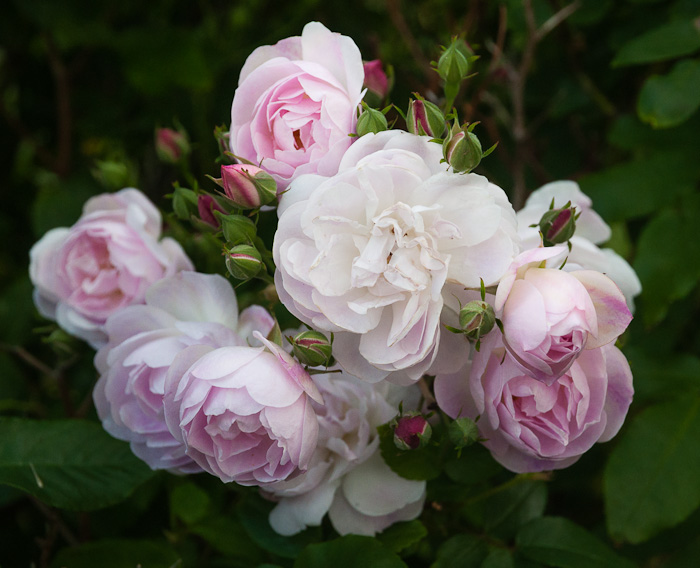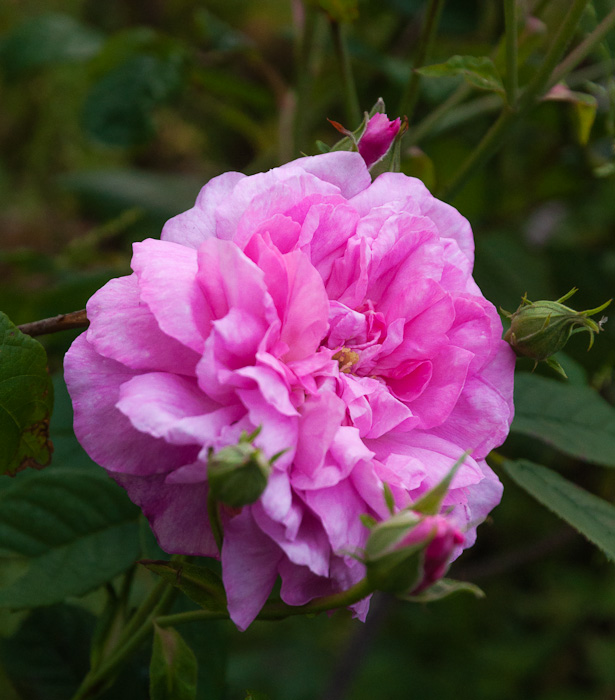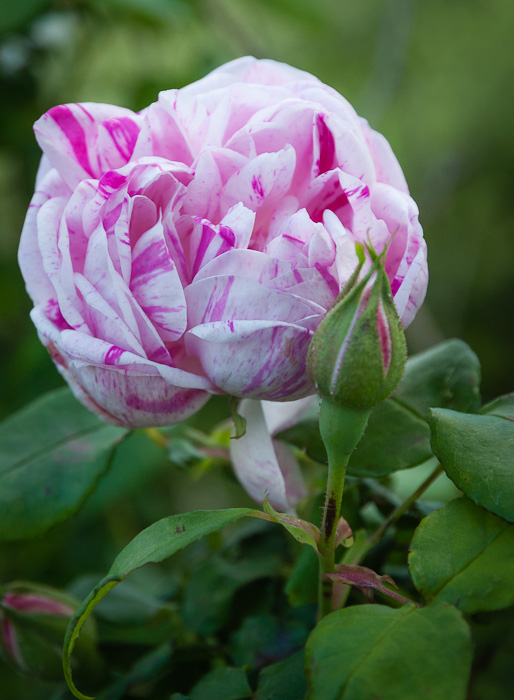Well, the wind has been roaring, but that has not defeated roses in my back yard. To live here they have to be tough, and in this difficult spot I have a number of old-fashioned roses - chosen because of their more informal beauty, their perfume, and their robust constitutions. They require (and get) little attention apart from admiration. They have also travelled a very long way to end up on this windy Wellington hillside, and thinking of their distant origins is one of the delights I enjoy with these plants.

We start in Charleston, South Carolina, where a rice planter named John Champney was given a China rose, Old Blush, by his neighbour Philippe Noisette. Champney crossed the repeat flowering China rose with the autumn-flowering musk rose Rosa moschata, producing Champney's Pink Cluster, regarded as the first of the Noisette roses. It was repeat flowering - a quality that breeders sought, vigorous and scented, and a very good parent rose for breeding. In turn, Philippe sent some seedlings from this rose to his brother Louis in Paris, and he introduced this one, Blush Noisette, in 1817. (This is the usual account, but in his book Classic Roses Peter Beales has as a footnote an account, written in 1846, of a breeder in Long Island being the source of the Noisette, and sending seedlings to a French nurseryman in Rouen where they were sold before Noisette's rose turned up. It was suggested that Philippe Noisette may have acquired his seedlings from Long Island somehow. Who knows?) The lovely clusters of little blush pink scented blooms begin to open in early spring and continue till late autumn. It is a healthy tall shrub that can be trained to climb if you want it to.

From the Middle East came the Damask roses, natural crosses between the species roses Rosa moschata, Rosa gallica and others. They were brought back to Europe by Crusaders of the 12th and 13th centuries. This group of roses has strongly perfumed petals and varied growth and flowering patterns. Ispahan is a summer flowering Damask, producing generous displays of warm pink flowers over a period of 6-8 weeks. Ispahan is named after the Iranian city (Isfahan) famed for its beautiful gardens. Rose history is always somewhat contentious it seems, but it appears that this rose was bred in Persia, now Iran, in the early 1800's. There are descriptions of roses like it growing in large numbers on hillsides between Isfahan and Shiraz. What a glorious sight that must be! Ispahan makes a large cheerful bush, the roses strongly scented and lasting well.

And from the island of Reunion (once called Ile de Bourbon) in the Indian Ocean near Madagascar, came the Bourbon roses. They are thought to have arisen from a cross between the Autumn Damask and the China rose Old Blush. The director of the island's botanical gardens sent seeds to his friends in France including M. Jacques, head gardener to the Duc d'Orleans, who recognised the new strain of roses and named them Bourbon roses. They are repeat flowering vigorous shrubs, and many crosses were made in French nurseries yielding beautiful varieties very popular in gardens at that time.
Rose Honorine de Brabant belongs to this lovely family. It has wonderfully eccentric stripes, splashes and speckles of crimson or purple on pale lilac pink. It makes a healthy strong growing shrub that can be trained as a climber.
(It appears that the first Bourbon rose might have been introduced to India, as it was described growing in the Botanical Garden in Calcutta, now Kolkata, before seed was sent to France. Rose history demonstrates again how it is rather full of intrigue and mystery!)